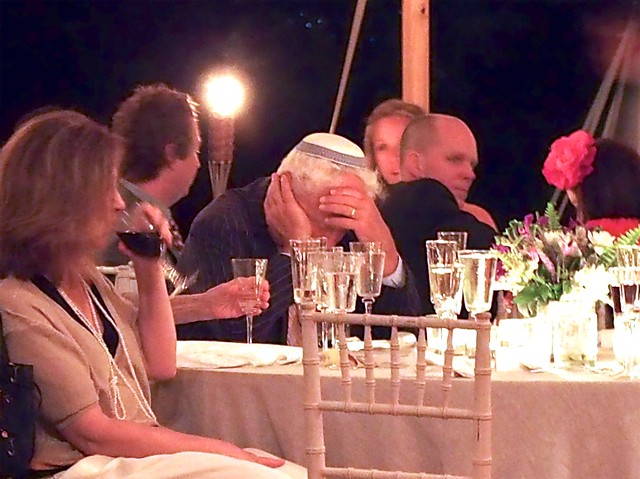I think I'm going to rent a 645z. The higher iso performance is the deal breaker.
Thanks for all your help.
Greg
Not so fast Greg:ROTFL:
If you are serious about shooting weddings as a business venture, plus perhaps portraits and some other people type photography ... then I have a few tips for you.
I
AM a wedding photographer ... with a lifetime of experience, and those hard earned scars mentioned above.
Like you, (but unlike most wedding photographers), I also have a predilection for MF cameras and have always incorporated them into my wedding/portrait/corporate work.
I've found the trick with MFD cameras is using them for their strengths, and avoiding their weaknesses. Used correctly MFD can help to separate you from the phalanx of Caniksony wedding photographers out there.
The other insight I can share is that low light is often bad light (in quality, or direction, or both) ... and unfortunately it is far to often even worse at a wedding. We do NOT have full command of when or even where pictures may be taken. We can try to guide things and set a schedule ... but as you already learned, things get delayed, locations change, weather changes, light mutates or disappears. Casual shooters have the luxury of not shooting when things go south, we do not.
High ISO performance does not magically turn bad light into good light. It merely allows us to somewhat better record the bad light, far to often yielding poor color reproduction, ramped up contrast, ugly noise and ghastly skin tones ... all the enemy of good wedding work.
Personally, I shoot available light whenever it is advantageous and beautiful. However, sometimes you have to shoot available light even if it is bad (like in a poorly lit church that doesn't allow flash during the ceremony). Modern CMOS DSLRs show their strength in these types of situations ... which is why I always have one with me. It doesn't have to be a mega-meg DSLR, just one that's quick to focus and reasonably good to ISO 1000.
While I also shoot MFD in nice available light, fact is almost any camera is good for that. Where I found MFD to excel is when using lighting ... especially in concert with Leaf-Shutter lenses because 1) it can do some things 35mm digital can't to provide more control over difficult lighting situations or the unexpected, and 2) I don't need high ISO.
While a modern CMOS focal plane shutter MFD camera like a a 645Z may satisfy your love of using one, in the end it will not provide a significant advantage over many current focal plane DSLRs or Mirrorless cameras ... in fact, it may well place you at a disadvantage in many circumstances. Forcing MFD into disadvantageous use rarely ends well ... trust me on this.
I have always used, and still use CCD based MFD because it is different in look and feel, and doesn't need to pretend it is a CMOS DSLR ... which it can NOT compete with on so many other levels
at a wedding. While this is pure subjectivity on my part, nothing has proven me wrong to date, and myriad weddings and assignments later.
No one likes to hear the practicality of gear use, but I'll say what many are thinking ... for how wedding images are used and reproduced there is no practical difference between a D800, Canon 5Dmark-whatever, or a Sony Mirrorless ... and MFD ... except subjective predilections. What can be technically different is the use of lighting.
After too many struggles and missteps along the way, I learned to NEVER shoot a wedding without bringing lighting ... for use with any camera, a
nd especially MFD.
I'm willing to talk further off-site about this with you if you wish.
- Marc
Here's cross section of shots using MFD and lighting to solve particular problems that came up during a wedding shoot ... only one of them was an available light MFD image ... a couple of them were specific client requests, would not exist were it not for lighting ... no DSLR shot high ISO available light would have solved the problem.













